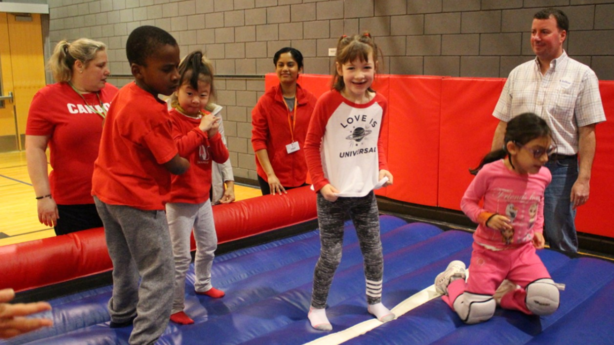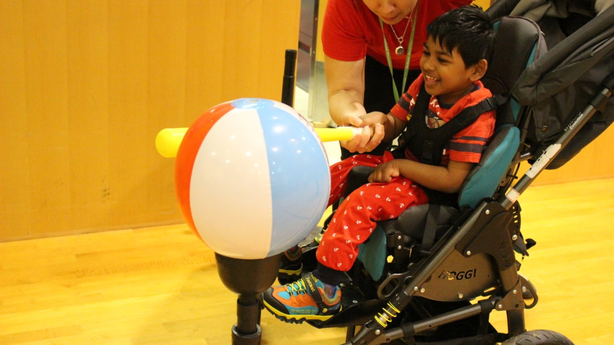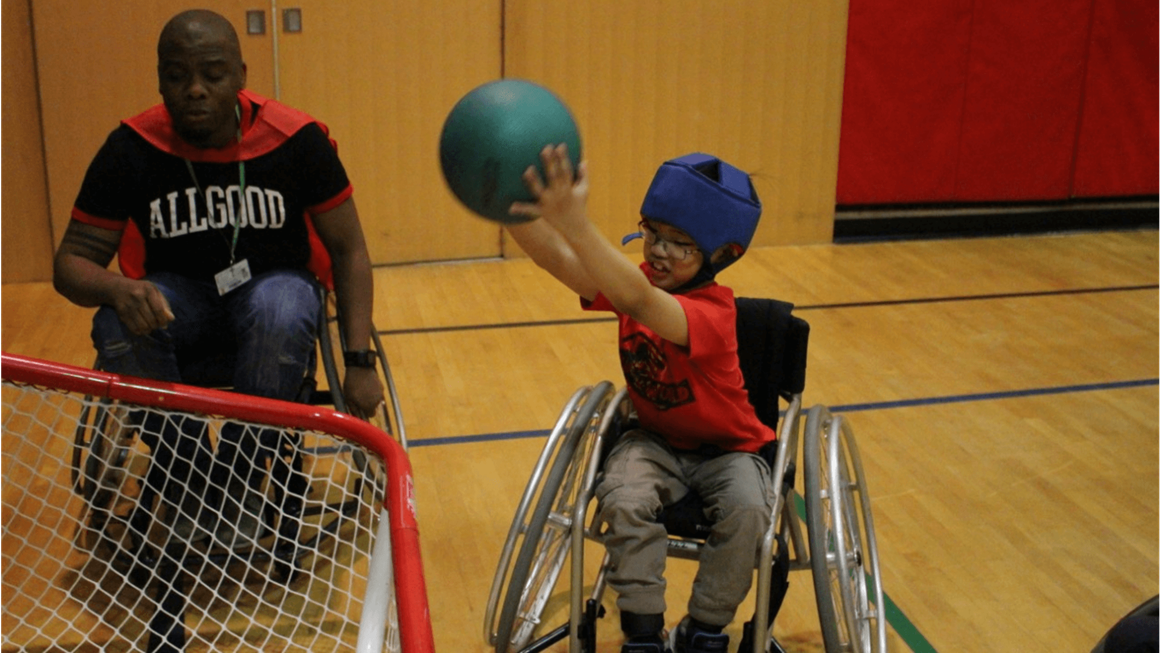A disco ball sparkles overhead, music pounds from the speakers and amid a swirl of activity, a grade 8 student is moving her wheelchair back and forth to the beat, discovering for the first time that she loves to dance.
The student is grooving out at Get Moving for Heart, an event created by physical education teacher Rose Monacelli at Bloorview School Authority.
Bloorview School is in a kids’ rehabilitation hospital and provides innovative school programs to children and youth with special needs. Rose is passionate about making sure that every student, from kindergarten through grade 12, can participate in activities.
“It’s about creating an inclusive and positive learning environment so that every student can take part and be challenged,” says Rose. “The participation of every student is valued.”
Adapting the program
That principle guided Rose when she took on Heart & Stroke Jump Rope for Heart, a fundraising program for elementary schools across Canada. Schools sign up to skip rope, raise funds for life-saving research and inspire kids to learn life-long healthy habits.
Teacher coordinators are the backbone of the operation.
At first, Rose tried to create an inclusive event around adapted skipping activities. This looked like ropes taped to the floor so students could step or jump over them, or having one end of a rope tied to a bench for those that couldn’t turn the rope together. But it was still challenging for some kids to join in.

Mia and friends jump on a bouncy castle at Get Moving for Heart.
For kids to feel like they matter is the most important thing.
“Students were saying that this doesn’t work for me. In hearing that, we decided that our school needs to do something a little bit differently,” says Rose.
And so, Get Moving for Heart was born; an adapted event filled with activities like dancing, baseball, wheelchair basketball, bouncy castles, and even bowling!
Get Moving for Heart focuses less on skipping and more on movement and how it helps you have a healthy heart and a healthy brain. Different activities ensure that all students can take part regardless of their skill level, interests or abilities. Older students are activity leaders and buddies to the younger ones.

Vlad plays baseball at Get Moving for Heart.
“Parents have heard their kids go home and say, ‘Wow, I played baseball and I helped someone!’” says Rose. She stresses that belonging means more than inclusion. “When you say inclusion, the students may be in the same physical space but aren’t necessarily having the same opportunities to participate.”
Students get to discover new and exciting ways they can move their body like the girl who loved dancing so much their mom was able to find them a community program where they could dance outside of school.
Belonging beyond inclusion
Rose believes a healthy heart isn’t just about the physical, it’s also affected by social and emotional factors. When there is space for her students to contribute and take part, it makes them feel valued and part of a community.
“For kids to feel like they matter is the most important thing,” says Rose.
The Jump Rope for Heart team was so impressed by Rose’s innovations that they have added her notes and recommendations into regular programming for all teachers to use.
“We are trying to get this event into other schools that have a lot of children who use different types of mobility devices,” says Cassie Jackson, a Heart & Stroke community coordinator. “Rose’s event is a prime example of the Jump program’s intentions. Jumping is fun and it’s great, but the most important part is to get moving.”
Rose emphasizes that the event would not be possible without the school-wide dedication and support from staff, volunteers, parents and students.
- Learn more about Jump Rope for Heart
